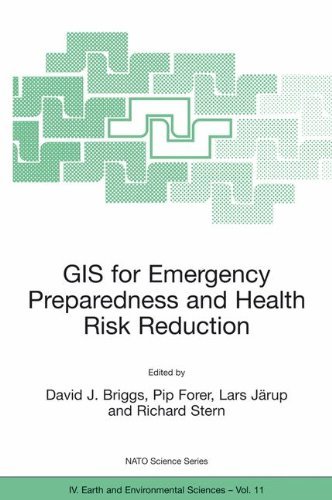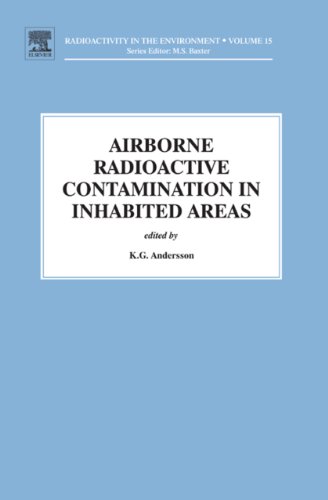
By David J. Briggs,Pip Forer,Lars Järup,Richard Stern
The vital issues mentioned the following contain the probabilistic nature of so much environmental risks and the semi-random elements that effect interactions among those and human exposures; the consequences of temporal and spatial scales on possibility evaluate and imputed probability; the consequences of dimension errors in chance estimation and the stratification of dangers and their affects in accordance with socioeconomic features; and the quantification of socioeconomic transformations in vulnerability and susceptibility to environmental risks.
Read or Download GIS for Emergency Preparedness and Health Risk Reduction (Nato Science Series: IV:) PDF
Similar disaster relief books
Airborne Radioactive Contamination in Inhabited Areas (Radioactivity in the Environment)
For plenty of a long time, investigations of the behaviour and implications of radioactive illness within the atmosphere have excited by agricultural components and meals creation. This used to be as a result of the inaccurate assumption that the results of credible contaminating incidents will be limited to rural components.
Hazards Analysis: Reducing the Impact of Disasters, Second Edition
The affects of common and man-made failures have elevated exponentially during the last few a long time. additionally, with our international interconnectedness and the growing to be scale of mess ups, contemporary catastrophic failures may have neighborhood, nationwide, or even worldwide fiscal results. Following within the culture of the profitable first version, dangers research: lowering the influence of failures, moment version presents a constitution and method for figuring out the character of ordinary and human-caused failures.
Snow Goose Hunting Made Simple: 21 Steps to Snow Goose Hunting Success
LEARN:: find out how to effectively Hunt Snow ducks whether you haven't any Snow Goose looking ExperienceDo you must hunt snow ducks yet are annoyed along with your loss of success? now we have all been there. we have now spent hundreds of thousands of greenbacks on searching provides and hours using, establishing decoys yet then now not discovering any snow ducks or seeing ducks yet having none come inside capturing diversity.
The Private Sector's Role in Disasters: Leveraging the Private Sector in Emergency Management
This publication examines the function of the non-public zone in emergency administration and the way that function is altering via deepest region intersections with executive, govt firms, and the general public sectors in all stages of emergency administration. It relatively specializes in the components during which executive laws and instructions advertise or motivate deepest area involvement, and appears at top practices for public–private partnerships in addition to many of the universal pitfalls of the contracting version.
- Risk Analysis and the Security Survey
- In the Wake of Disaster: Religious Responses to Terrorism and Catastrophe
- Community Disaster Recovery and Resiliency: Exploring Global Opportunities and Challenges
- Managing Famine, Flood and Earthquake in China: Tianjin, 1958-85 (Routledge Studies in the Modern History of Asia)
- Environmental Radioactivity and Emergency Preparedness (Series in Medical Physics and Biomedical Engineering)
Extra info for GIS for Emergency Preparedness and Health Risk Reduction (Nato Science Series: IV:)
Example text
